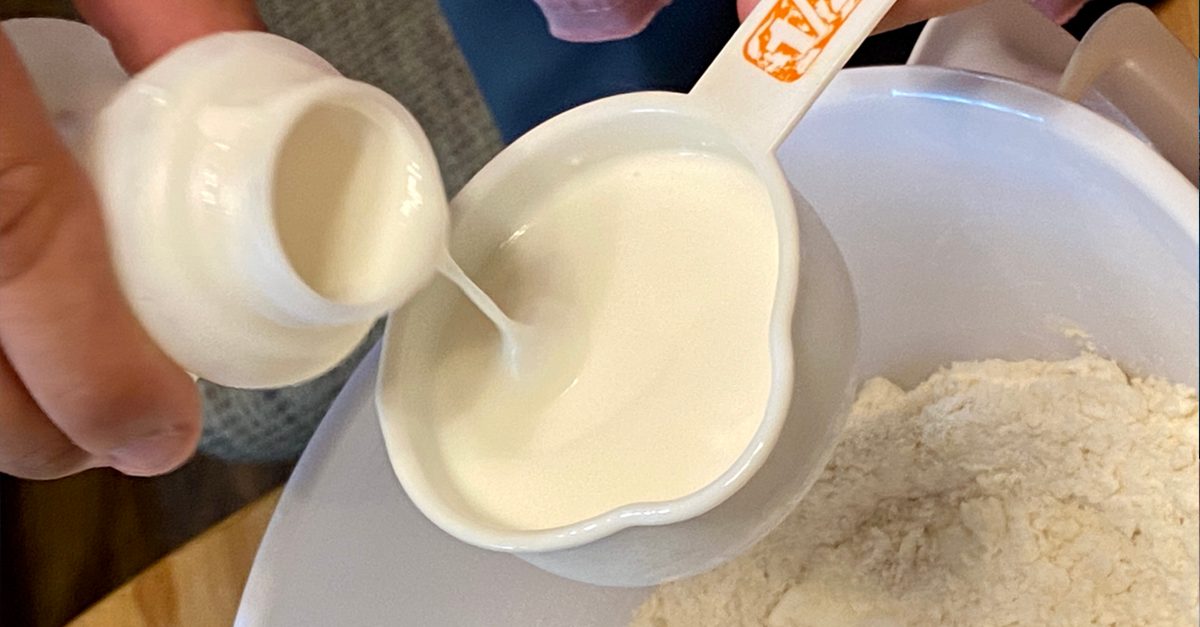Buttermilk or Heavy Cream? Understanding Their Unique Characteristics
Buttermilk and heavy cream are two dairy products often used interchangeably in cooking and baking. However, it is important to be able to discern their differences to apply them properly. Below, we look into the unique characteristics of buttermilk and heavy cream, and how they contribute distinct flavors and textures to a variety of dishes.
;)
Dairy products play essential roles in cooking and baking, providing rich flavors, textures, and moisture to a wide range of recipes. Among these, buttermilk and heavy cream stand out as versatile ingredients with distinct characteristics.
Buttermilk is a fermented dairy product traditionally derived from the liquid left behind after churning butter. It's typically tangy in flavor and has a slightly thick consistency. While originally a byproduct of butter production, modern buttermilk is often made by adding lactic acid bacteria to pasteurized milk, resulting in fermentation and the characteristic tangy taste.

On the other hand, heavy cream, also known as heavy whipping cream, is a high-fat dairy product derived from the fatty portion of cow's milk. It contains a high butterfat content, giving it a rich and creamy texture.
While both buttermilk and heavy cream are derived from milk, they offer unique attributes that influence the outcome of your desired recipe. Considering different factors, we explore the distinctions between buttermilk and heavy cream, from their compositions to their applications in recipes, helping you understand when and how to use each effectively in your kitchen.
1. Production Process

Buttermilk production involves introducing lactic acid bacteria to pasteurized milk, fermenting it at a controlled temperature for several hours. This inoculated milk is then allowed to ferment, converting lactose into lactic acid and imparting buttermilk's tangy flavor and slightly thick consistency. In contrast, heavy cream production includes separating cream from whole milk through centrifugal force, followed by pasteurization to ensure quality and safety.
2. Composition: Fat Content, Acidity, and Texture
Buttermilk possesses a relatively low fat content compared to heavy cream, ranging from 0.5% to 2%. Its acidity varies based on the fermentation level, usually falling within the pH range of 4.4 to 4.8, contributing to its tangy flavor. Texture-wise, buttermilk is thinner than heavy cream, resembling whole milk but with a slightly thicker consistency due to fermentation. In contrast, heavy cream boasts a high fat content, ranging from 36% to 40%, lending it a rich flavor and creamy texture.

3. Applications
The unique qualities of buttermilk and heavy cream lend themselves to a myriad of delicious recipes. Buttermilk's tangy essence and tenderizing properties make it a sought-after ingredient in baking, where it enhances the texture and flavor of cakes, muffins, and pancakes. Additionally, buttermilk finds its place in savory dishes, where its acidity adds a light tang to marinades and salad dressings.
On the other hand, heavy cream's luxurious creaminess and high fat content make it indispensable in the creation of rich and velvety sauces, such as Alfredo and béchamel. Moreover, heavy cream adds decadence to desserts, serving as the base for creamy fillings, frostings, and ice creams.
4. Flavor and Texture
The flavor profiles and textures of buttermilk and heavy cream offer a stark contrast in culinary applications. Buttermilk's tangy taste, coupled with its thin consistency, imparts a subtle creaminess to dishes, making it an ideal choice for batters and brines.
In contrast, heavy cream's rich and velvety flavor, complemented by its thick texture, lends itself to indulgent creations like creamy sauces and whipped toppings, elevating the sensory experience of dishes.

Conclusion
While buttermilk and heavy cream both originate from milk, they offer distinct characteristics that make them valuable assets in the kitchen. Buttermilk's tangy flavor and thin consistency excel in baking and tenderizing, while heavy cream's rich taste and thick texture add creaminess and depth to various dishes. With a clear understanding of these dairy products, you can now elevate your cooking.
;Resize,width=767;)

;Resize,width=712;)
;Resize,width=712;)
